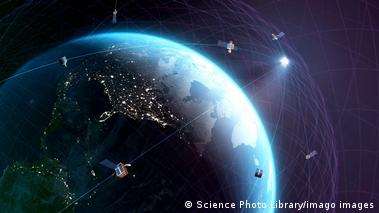
July 17, 2023, 11:05 PM
July 17, 2023, 11:05 PM
SpaceX’s Starlink constellations of satellites emit radiation into the night sky, which could interfere with astronomers’ attempts to pick up radio signals from the far reaches of the cosmos, according to a new study published in the journal Astronomy & Astrophysics.
So while the complaints from Starlink constellation scientists for this reason are not new, the present study suggests that the satellites are introducing another confounding factor into their observations: electronics on SpaceX’s Starlink satellites are “leaking “low-frequency radio waves other than their assigned downlink bands, i.e. unintended radio waves that contaminate the wavelength bands that are supposed to be protected for radio astronomy, thereby potentially affecting our ability to practice astronomy.
According to the study, some of these “unintentional” signals, detected on nearly 50 Starlink satellites, overlap with those detected by radio telescope satellite dishes. In addition, they hope that similar detections will also occur in satellite constellations managed by other companies, not just SpaceX.
“This study represents the latest effort to better understand the impact of satellite constellations on radio astronomy,” says engineer Federico Di Vruno, from the SKA Observatory and the International Astronomical Union.
“Previous Dark and Quiet Skies workshops theorized about this radiation, our observations confirm that it is measurable,” he added.
Growing presence of satellites raises concerns
As Earth’s skies become increasingly crowded, the increasing presence of satellites raises significant concerns for our study of space. SpaceX currently has about 4,365 of its small internet satellites in Earth orbit, with thousands more scheduled to launch. And they’re not the only company diving into this trend. OneWeb has more than 600 satellites in orbit, and Amazon plans to launch thousands more starting in 2024, it reports. Science Alert.
Mindful of concerns about visible light pollution, SpaceX has responded by designing a new, dimmer satellite. However, this solution only addresses one part of terrestrial astronomy, specifically that related to visible wavelengths. The problem is exacerbated in the field of radio astronomy, a potentially much more extensive branch, and that is where a possible complication arises.
Radio astronomy: unwanted radio waves
In Europe, satellites use frequencies ranging from 10.7 to 12.7 gigahertz for downstream communications. However, the researchers suspected that the satellites could emit unwanted radio waves outside of this specific band, which prompted the study by Di Vruno and his colleagues.
To do this, the researchers used the Netherlands’ LOFAR (Low Frequency Array) telescope, normally designed to capture the extremely weak signals emitted by cosmic objects.
“With LOFAR, we detected radiation between 110 and 188 MHz from 47 of the 68 observed satellites,” explains Cees Bassa, co-author of the study and astronomer at the Netherlands Institute for Radio Astronomy (ASTRON), in a press release.
“This frequency range includes a protected band between 150.05 and 153 megahertz specifically assigned to radio astronomy by the International Telecommunication Union,” he added.
SpaceX does not violate any regulations
However, the researchers have pointed out that SpaceX is not breaking any laws, as there is currently no international regulation that specifically addresses this type of radiation from satellites, unlike what happens with ground-based equipment.
However, according to Di Vruno and his colleagues, given the growing concern about Starlink’s satellites and their impact in space, it would be prudent to consider implementing regulations in this regard. Tracking simulations conducted by the researchers reveal that the effect of this radiation is significantly aggravated as the number of satellites in the constellation increases.
“This makes us not only concerned about existing constellations, but even more about predicted ones,” co-author Benjamin Winkel, an astronomer at the Max Planck Institute, said in the statement.
The research team has started discussions with SpaceX to address the issue and find solutions to help mitigate it in the future. So far, the talks have shown positive progress, the researchers said in their statement.
However, they added, it is important that many other private companies also consider this issue and take steps to address the potential impacts of their satellites in space.
“The present study highlights one example of the various channels of how technological development can have unforeseen side effects in astronomy,” says astronomer Michael Kramer of the Max Planck Institute for Radio Astronomy and the Astronomische Gesellschaft in Germany.
“With SpaceX leading by example, we now expect the broad support of the entire satellite industry and regulators,” he added.
Edited by Felipe Espinosa Wang.

















